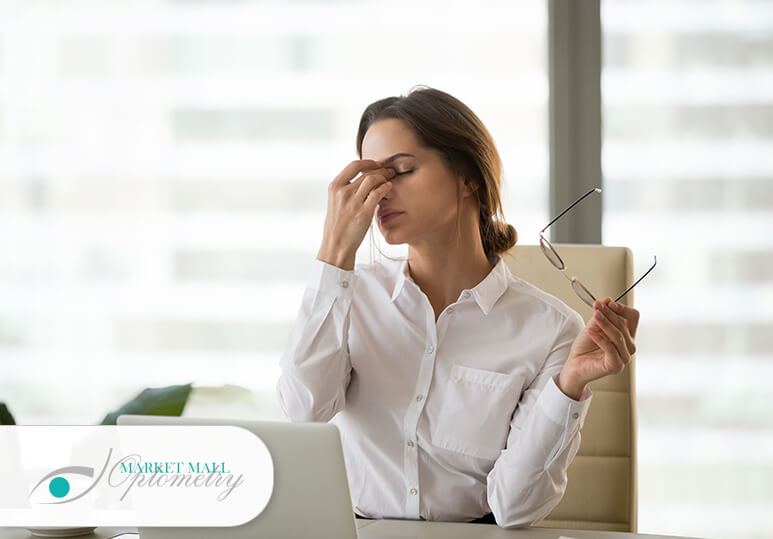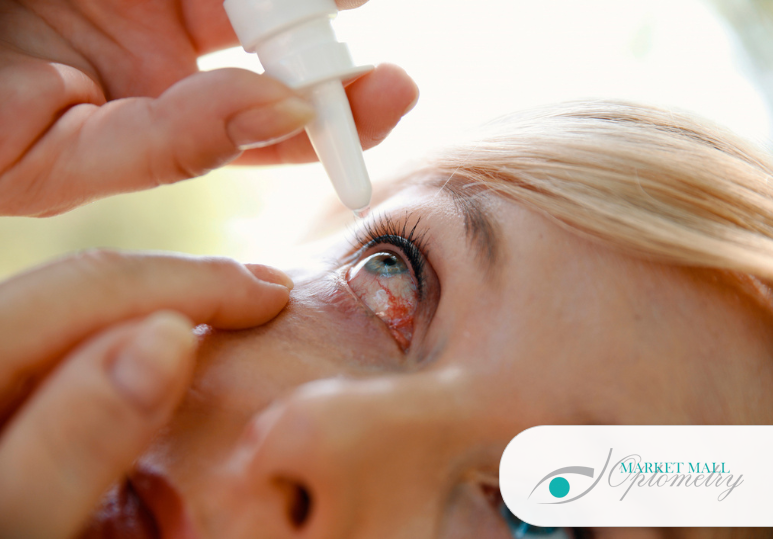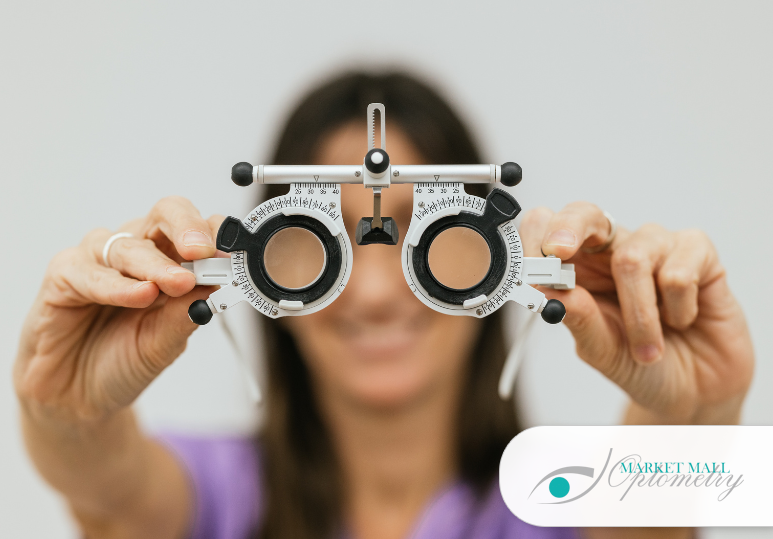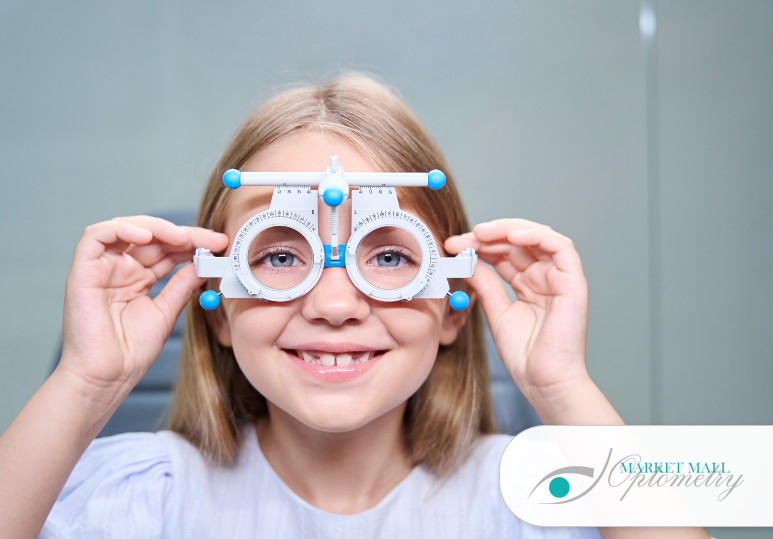5 Common Dry Eye Treatments Options
In most cases, dry eyes can be managed successfully. Treatments result in increased comfort, fewer dry eye symptoms, and better vision. Your optometrist will perform an eye exam to diagnose your dry eye symptoms and create a treatment plan that will be tailored to your custom needs. Here are some common treatments for dry eye:
Artificial Tear Drops
For mild cases of dry eyes caused by extensive screen time, reading, schoolwork, and other similar cases, the best treatment may be the use of artificial teardrops or other lubricating eye drops. There are a wide variety of artificial teardrops that are available over-the-counter, and some have different ingredients best suited for different dry eye symptoms. For example, one brand of artificial tear drops may work better if you do not produce enough natural tears (aqueous-deficiency dry eye), while another brand may be more effective if your tears naturally evaporate too quickly (evaporative dry eye). Your optometrist will recommend the best brand suited for your dry eye symptoms to allow for optimal treatment.
Prescription Medications And Eye Drops
Your optometrist may prescribe a medication that can either be taken orally or as eye drops. Most of these medications focus on reducing inflammation in the eyelids. If your eyelids are swollen, this prevents your oil glands from producing oils into your tears. If there are no oils in your tears, they will evaporate quickly causing dry eye symptoms. Here are some common prescription medications used to treat dry eye syndrome:
- Drugs and eye drops to reduce eyelid inflammation
- Eye drops to control cornea inflammation
- Eye inserts that work like artificial tears
- Tear-stimulating drugs
Punctal Plugs
Punctal plugs are usually considered when prescription and non-prescription eye drops and medications fail to relieve your dry eye condition. They are tiny, biocompatible devices that are inserted into the tear ducts to block drainage. This increases the eye's tear film and surface moisture to help relieve certain forms of dry eye. Temporary or dissolvable plugs are available and can last anywhere from a few days to a few months.
Warm Compresses
Warm compresses and certain eye masks will help clear blocked oil glands. The heat will open the glands up to allow for oil to seep through, an essential ingredient for keeping your eyes lubricated for long periods of time. Also, alter your lifestyle, wear sunglasses all of the time, and be diligent about applying your artificial eye drops.
IPL Treatment
Intense pulsed light treatment is a common dermatology treatment used to address rosacea, sun damage, and other skin concerns. However, this groundbreaking technology can also be used to address chronic dry eye syndrome and Meibomian Gland Dysfunction of the eyelids. IPL for dry eyes utilizes pulses of light to liquefy and release hardened oils that have clogged in the meibomian glands in the eyelids. This treatment will restore normal oil flow into the tear film and requires no downtime or surgical intervention.
Market Mall Optometry Dry Eye Clinic
The most effective treatment for your dry eyes will depend on a variety of factors. You may need different treatments depending on your underlying condition causing your dry eye symptoms. Your optometrist will be able to correctly diagnose the cause of your dry eye symptoms and will recommend a treatment plan best suited for you. If you do not respond well to artificial eye drops, your optometrist may have you explore other options such as prescription medications, IPL therapy, or a procedure to clear your tear ducts.
Our ophthalmologists at Market Mall Optometry specialize in treating dry eyes. See how we can help you by calling 403-286-4884 or filling out the online contact form.
FAQs
How do I know if I have dry eyes or not?
Common symptoms of dry eyes include:
- A stinging, burning, or scratchy sensation in your eyes.
- Stringy mucus in or around your eyes.
- Sensitivity to light.
- Eye redness.
- A sensation of having something in your eyes.
- Difficulty wearing contact lenses.
Visit your optometrist if you experience any of the symptoms listed above so you can begin treatment to restore your vision and help you see comfortably once again.
Does receiving punctual plugs in my eyes hurt?
Most patients report not feeling any pain and only slight discomfort when getting punctual plugs. The process is very quick and is done within a few minutes. Once the process is over, most people cannot feel them.
Does IPL therapy cause damage to the eye?
Patients wear protective eye shields to prevent the light from the laser from affecting their eyes. Your doctor will ensure a proper wavelength is used to target your oil glands without causing harm to your eye.





